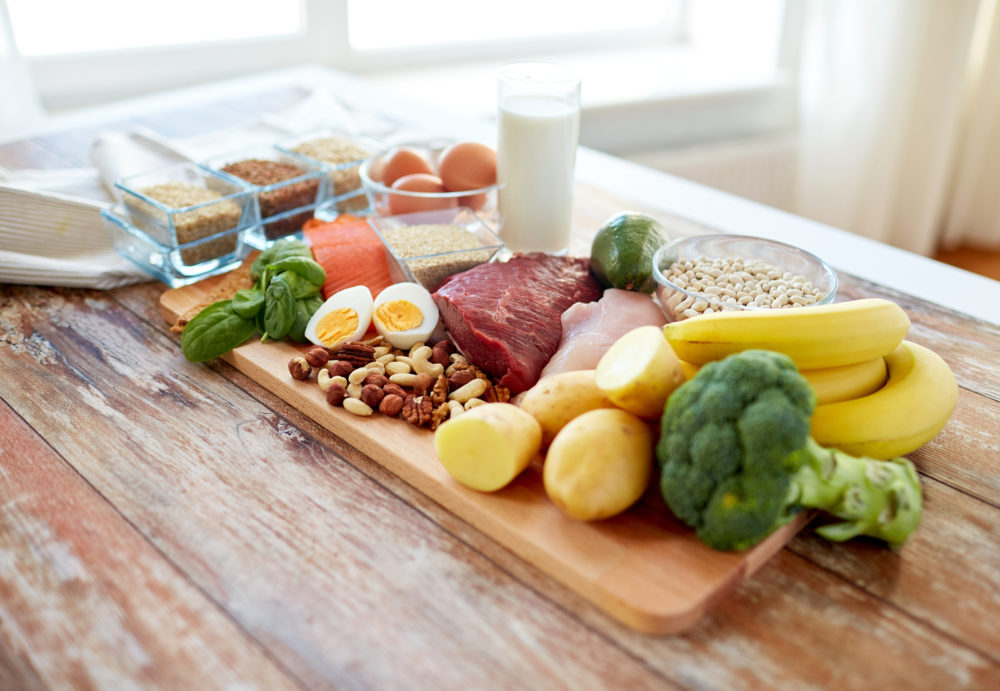This post was originally written by and appeared on Vital Plan.
[dropcap size=small]W[/dropcap]e all like to eat. Food is necessary for survival, and it also often tastes good and satisfies sometimes mysterious cravings. There’s nothing wrong with liking food. However, many of the food products available today contain excessive chemicals, filler products and other unhealthy items that make them damaging to your health. Here are some tips on what foods you should eat if you want to stay healthy. While this is in no way a complete list, it’s a good start.1. Choose Unrefined Whole Foods; Avoid Processed Foods
The health potential of food is defined by how close it is to its natural origins. Any food loses nutritional value with processing. Commercially processed foods are low in nutrition and are the chief source of excessive dietary glucose, abnormal fats, and toxins that define an average American diet. The first and most important step in changing to a healthier diet is getting rid of them.
2. Eat More Vegetables
The nutritional question posed really does not matter; the answer almost invariably is “eat more vegetables!” Vegetables provide antioxidants, nutrients and healthy fats. High in fiber, vegetables are essential for reducing toxins and cholesterol and also for slowing absorption of glucose. That same fiber supports friendly bacteria in the gut. Minerals provided in vegetables buffer pH. Regular consumption of vegetables lowers risk of all diseases and slows the processes of aging. The health of your diet is directly proportional to the amount of vegetables it contains—the more variety, the better. No vitamin pill can come close!
“As a general rule of thumb, meat should make up 10 percent or less of your total food”
3. Don’t Skimp on the Fruit
Try to eat an apple, a peach, a plum, a slice of melon or a handful of some type of berries every day. Red grapes, blueberries, cherries, blackberries, and other types of berries contain potent anti-oxidants. Add them to yogurt, or just eat them plain. Follow the seasons when different types of temperate fruits are available, but frozen or dried will do in the colder months when nothing fresh is at hand. Variety is a key principle for all food sources.

4. Remember Your Whole Grains
Completely avoiding grain is not only difficult but is unwarranted. Whole grains offer considerable nutritional value. They offer a healthy source of carbohydrates, vitamins and minerals, and are typically high in fiber. Grains such as oats, brown rice, and barley should be considered a standard part of a healthy diet. Once in a while, try an unfamiliar grain such as millet, teff or quinoa—the Internet is full of recipes!
5. Eat Lots of Beans
Beans contain high quality protein, are generally low in fat, and provide complex carbohydrates that do not adversely affect blood glucose; in fact, beans slow the absorption of glucose from other foods. They are also high in fiber and contain antioxidants and other chemicals that may prevent cancer and atherosclerosis. Beans come in a wide variety of flavors, shapes, colors, sizes, and can be incorporated into a wide assortment of dishes or eaten alone. Hummus is excellent as a mayonnaise-substitute on sandwiches, as a thickener in dishes, and as a dip for raw vegetables.
6. Don’t Overlook Nuts
Nuts contain favorable types of fats and are a good source of protein and important minerals. They satisfy hunger without raising blood sugar. Look for raw or low salt varieties. Nut butters are a good snack food and make excellent thickeners in dishes. Try some varieties other than peanut butter. Nuts and nut products are high-calorie foods, however—a factor that should be taken into consideration if trying to lose weight! A variety of nuts can be a regular part of your diet.
 7. Feel Good About Eating Meat
7. Feel Good About Eating Meat
Fresh lean meat obtained wild or raised “grass-fed” can certainly be included as part of a healthy diet. Even with healthier meat, however, consumption should be appropriately limited. It is time for meat to step out of the spotlight for a change. Use meat within a dish or as a side-dish, rather than as the main course. Small amounts of meat can be used to add flavor to dishes that are predominantly vegetable. Poultry and seafood are preferred over beef and pork. As a general rule of thumb, meat should make up 10 percent or less of your total food. Only about 3-6 oz. of lean protein per day is essential.
8. Spice Up Your Food
Spices not only make food more interesting and add flavor without adding extra sugar and fat, they also make food healthier. Many of the spices and herbs have anti-inflammatory properties and virtually all of them have some positive medicinal value.
9. Stay Hydrated
Clean, pure water should be your primary beverage. Strive for a couple of liters every day. Green or white teas with minimal sweetening are the best options for flavored beverages.
10. Pick Fresh; It’s The Best
Excessive cooking and excessive processing quickly decrease the nutritional value of food. Age and spoilage allow the growth of toxin-producing fungal and bacterial species. For most foods, fresh is best. Fresh frozen is almost as good. Avoid excessive use of foods containing preservatives. Fish, beans and tomatoes retain most of their beneficial nutrients when canned, but most vegetables do not. We live in a time when fresh food and refrigeration are readily available. Take advantage of it!
For more information visit Vital Plan. Vital Plan is a wellness company committed to offering quality natural supplements and credible health information to help people improve their lives.
Vital Plan was founded by Dr. Bill Rawls to increase awareness about chronic illness and offer his personal journey through Lyme disease and fibromyalgia as an inspiration and learning experience for others.





Recent Comments